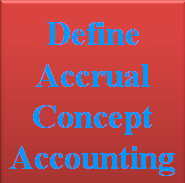Prudence GAAP Concept

Prudence is one of the Accounting Concepts that is included in Generally Accepted Accounting Principles (GAAP). We already discussed it in our previous article Generally Accepted Accounting Principles Prudence Concept , but here we discuss this accounting concept with reference to Revenues, Profits, Expenses and Losses. Under this Principle, revenues and profits should be treated as different from expenses and losses for the company businesses. All losses and Expenses of the entrepreneur must be recorded in the books of accounts as soon they are known to the entrepreneur while all the profits and revenues will never record in the books of accounts unless these actually earned by the entrepreneur during the accounting period. For Example, if there is an estimation that amounts due from the customer of the entrepreneur may become Bad Debts , then the Adjusting Entry is accounted for this amount due from the customers of entrepreneur. But in case of





